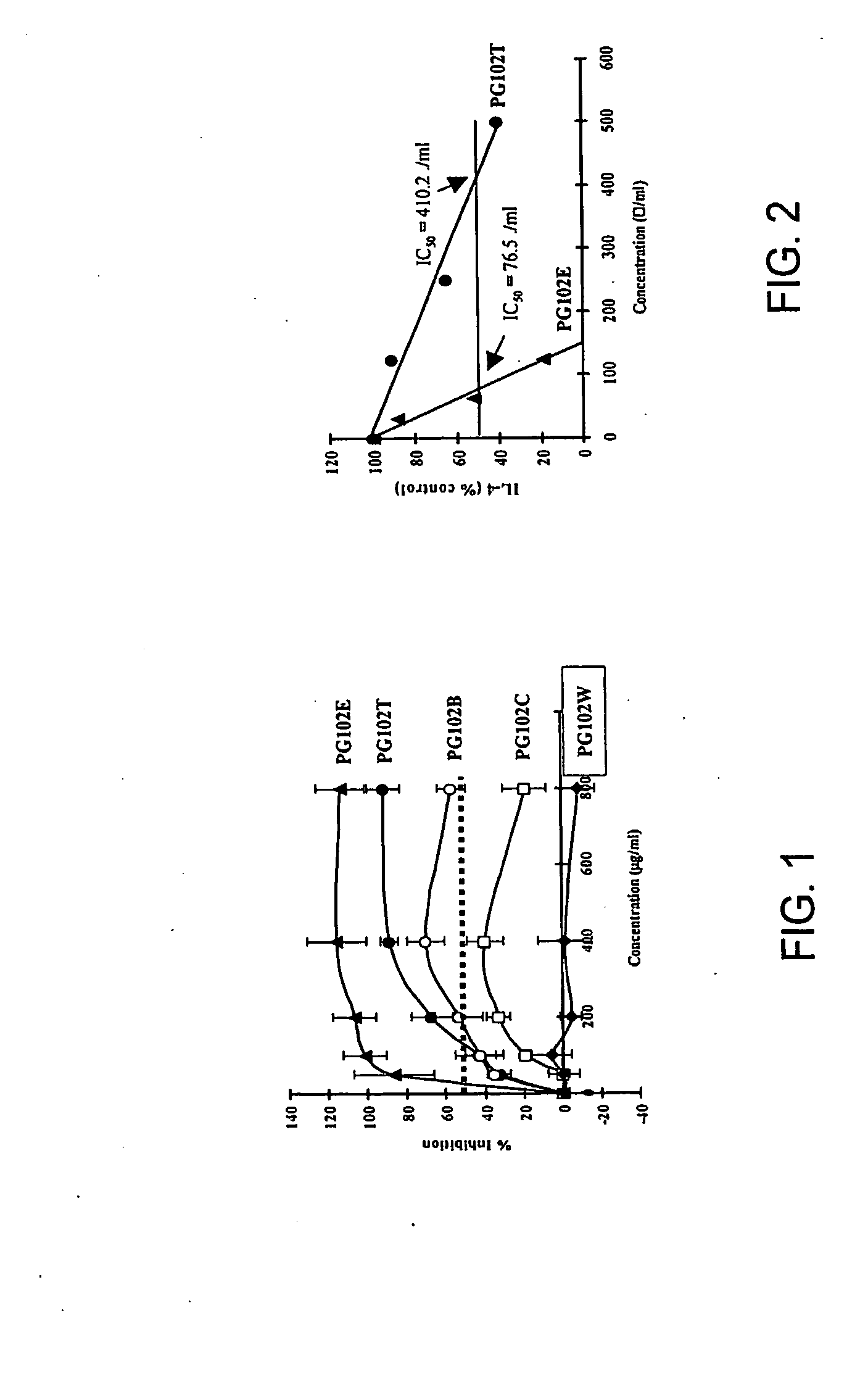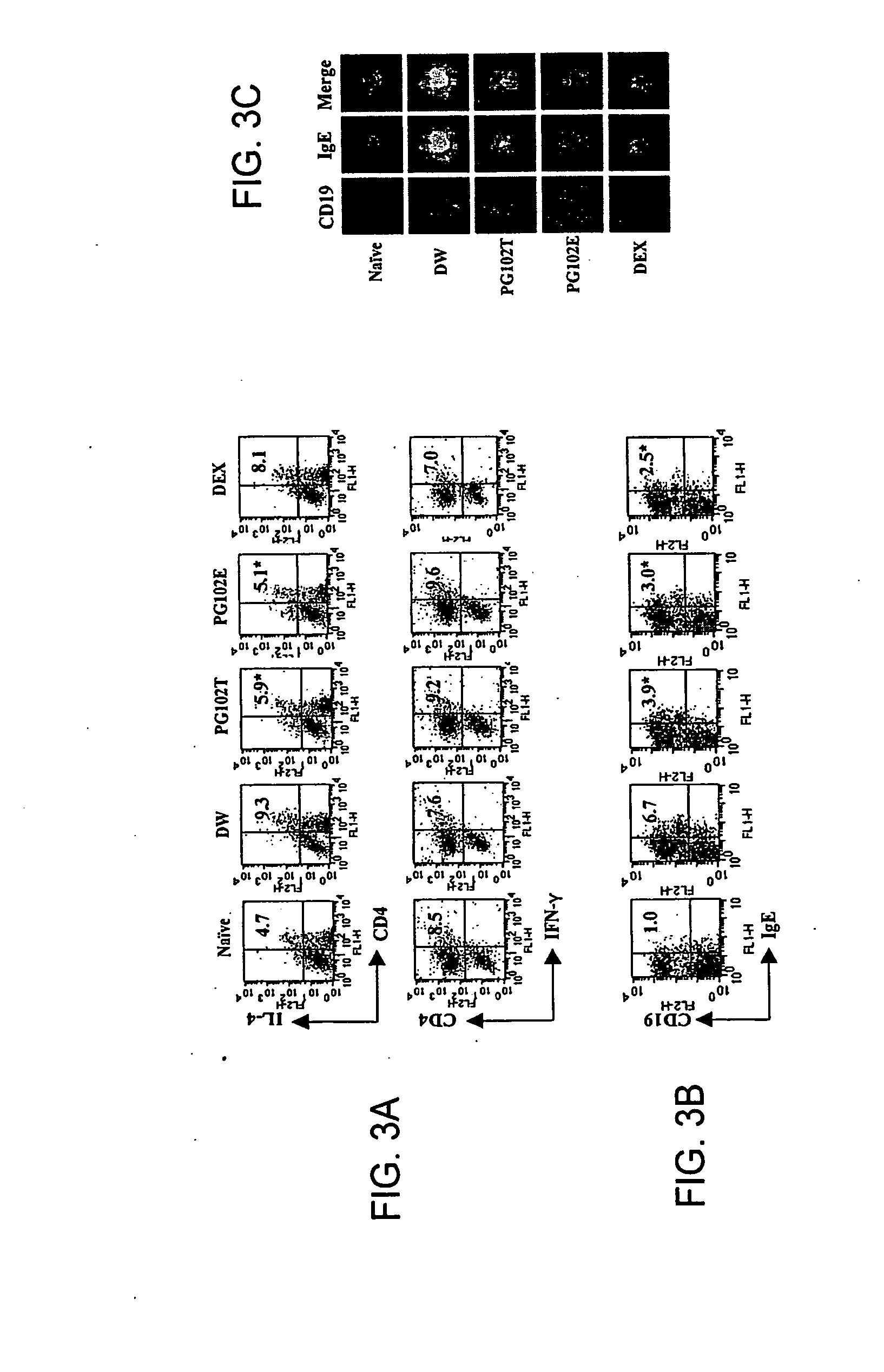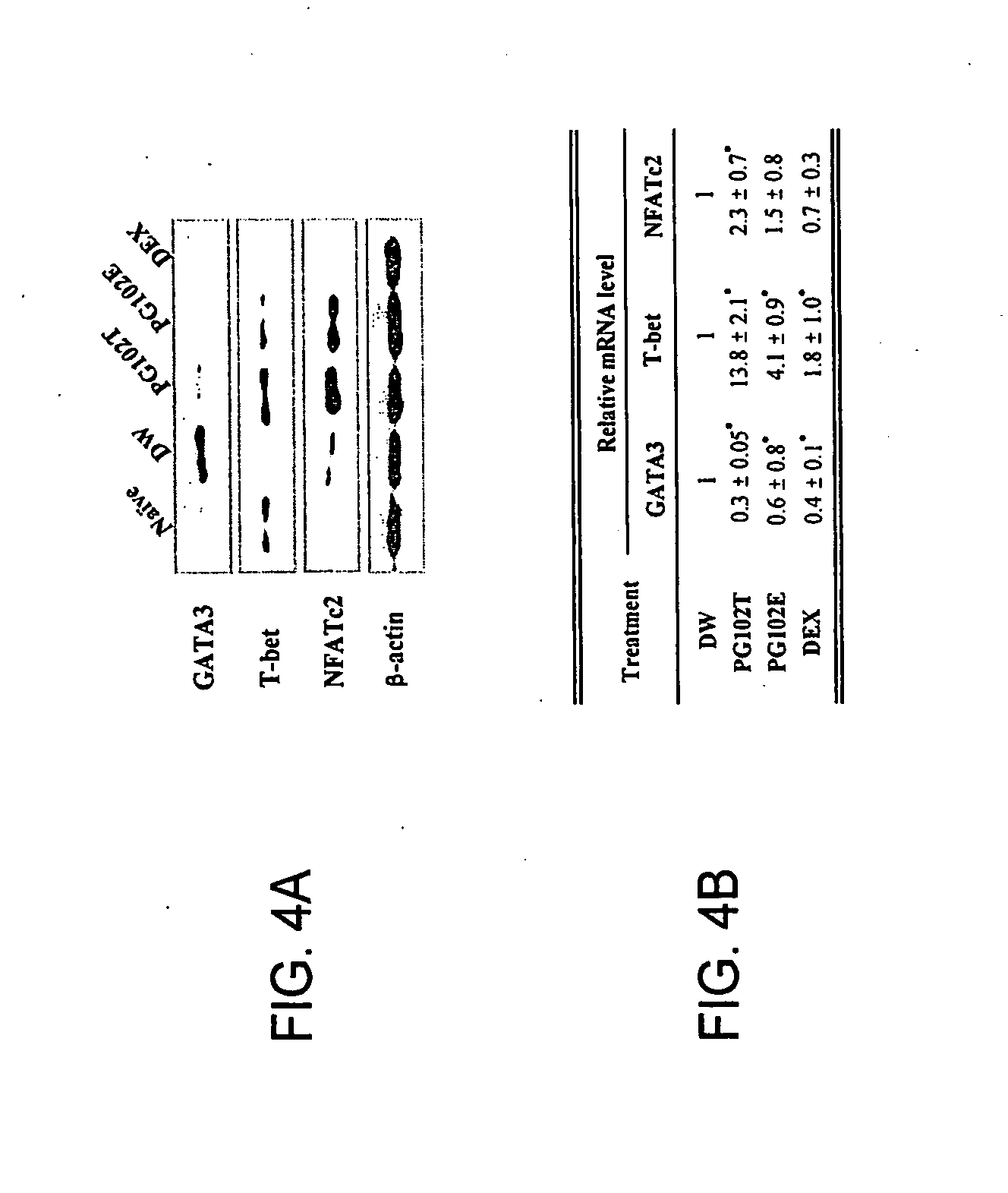Compositions Comprising Actinidia and Methods of Use Thereof
a technology of actinidia and a compound is applied in the field of actinidia, which can solve the problems of obstructed breathing, tissue damage and sometimes death, chronic tissue inflammation in tissues, and hypoxemia
- Summary
- Abstract
- Description
- Claims
- Application Information
AI Technical Summary
Benefits of technology
Problems solved by technology
Method used
Image
Examples
example 1
[0167]The following example demonstrates that at least two specific extracts prepared from A. arguta, denoted PG102T and PG102E, contain inhibitory activity on the production of IgE as well as the ability to regulate selective Th1 and Th2 cytokines.
Materials and Methods
[0168]Mice. BALB / c female mice (6 wks old) were obtained from Daehan Biolink, Co. Ltd. (Korea), kept in an air-conditioned and pathogen-free room and acclimated for at least 1 wk. All experimental procedures mentioned below were performed in accordance with the institutional animal care and use guidelines of the Animal Experimental Center at Seoul National University.
[0169]Preparation of various extracts from A. Arguta. The hardy kiwifruits used in this study were purchased from a farm specializing in the cultivation of this fruit (Hurstberry Co. Ltd., Oregon, USA) and their identity was kindly confirmed by Dr. Ella I. Kolbasina (The Moscow Branch of Vavilov Plant Cultivation Research Institute, Russia). The dried fru...
example 2
[0194]The following example demonstrates that at least two specific extracts prepared from A. arguta, denoted PG102T and PG102E, have a therapeutic effect on atopic dermatitis.
[0195]NC / Nga mice were established as an inbred strain in 1957 based on Japanese fancy mice (Nishiki-Nezumi). When kept under specific pathogen-free (SPF) conditions, mice remain normal and healthy. However, when placed in conventional surroundings, clinical signs begin with scratching behavior initiating from the age of 8 weeks followed by the onset of the eczematous condition. The promptly developed eczema is typically localized on the face, ears, neck and back region. The affected mice display the various clinical signs including hemorrhage, superficial erosion, deep excoriation, scaling, dryness of the skin, and growth retardation (Hiroshi et al., Int Immunol 1997; 9(3):461-466). In the skin lesions, the infiltration of numerous CD4+T cells and eosinophils and the increased number of mast cells with degran...
example 3
[0218]The following example shows the preparation of various preparations comprising A. arguta that were used in the examples below.
Plant Material
[0219]Stems (consisting of canes and fruiting spurs), roots, and bark of Actinidia arguta (Sieb. Et Zucc.) Planch. ex Miq. (Actinidaceae) cultivar ‘Ananasnaya’ were collected at Hurst Berry Farm, Sheridan, Oreg. A voucher specimen (#518640) was authenticated by Mr. Tim Hogan, Collection Manager, University of Colorado Herbarium, The University of Colorado, Boulder, Colo., and deposited at the same location. Plant material was air dried 48 hours and stored at room temperature prior to extraction or other processing. Ripe, ready-to-eat A. arguta fruit were collected at Hurst Berry Farm, frozen immediately, shipped and stored frozen (−20° C.) prior to extraction or other processing.
Extracts and Other Preparations
[0220]Powdered stems (126.6 g), powdered roots (79.0 g), and finely divided bark (126.2 g) were each extracted with distilled water...
PUM
| Property | Measurement | Unit |
|---|---|---|
| Temperature | aaaaa | aaaaa |
| Temperature | aaaaa | aaaaa |
| Percent by mass | aaaaa | aaaaa |
Abstract
Description
Claims
Application Information
 Login to View More
Login to View More - R&D
- Intellectual Property
- Life Sciences
- Materials
- Tech Scout
- Unparalleled Data Quality
- Higher Quality Content
- 60% Fewer Hallucinations
Browse by: Latest US Patents, China's latest patents, Technical Efficacy Thesaurus, Application Domain, Technology Topic, Popular Technical Reports.
© 2025 PatSnap. All rights reserved.Legal|Privacy policy|Modern Slavery Act Transparency Statement|Sitemap|About US| Contact US: help@patsnap.com



